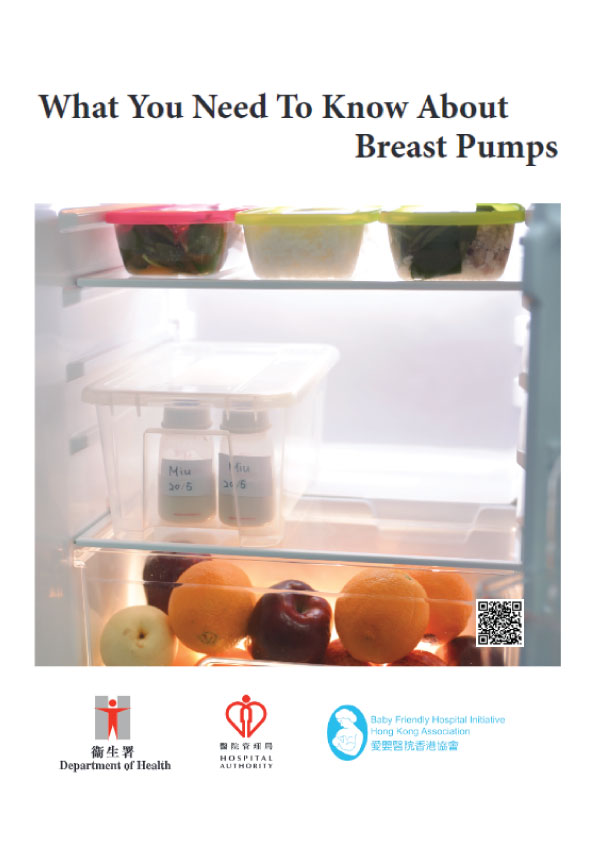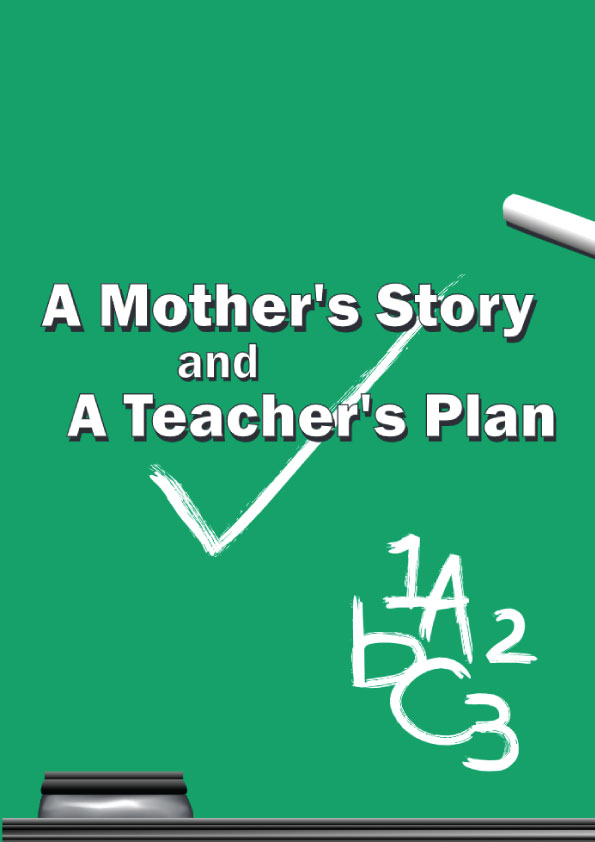- Expressing breastmilk allows me to continue breastfeeding my baby when I return to work!
- Giving expressed breastmilk let me know how much my baby is drinking.
- Giving my baby expressed breastmilk save more time than direct breastfeeding!
- My preterm baby is too weak to suckle on my breast. I need to feed him with expressed breastmilk.
As a new mum, you may wonder when to use a breast pump.
What do you need to pay attention to when using a breast pump?
If you want to know when to express milk, you can read Chapter 5 of Love, Starts from Breastfeeding…This booklet focuses on how to use a breast pump properly.
How a breast pump works
A breast pump extracts breastmilk by creating negative pressure within the breast shield. The basic structure of a breast pump has 3 detachable components.
- Breast shield: A cone-shaped cup that fits over the breast
- Pump: Creates negative pressure to extract breastmilk; it can be connected to the breast shield directly or with tubing.
- Milk container
Please note: You can express milk by hand or with a breast pump. Even if you prefer to use a pump, you should also learn how to hand-express breastmilk in case you need to.
Choose a suitable pump
There are various types of breast pumps available on the market, including manual, electric and battery-powered. There are also single shielded and double shielded breast pumps; the latter can extract milk from both breasts at the same time. Each varies in price, quality and efficiency. You should consider your own needs and choose a breast pump that suits you best. When choosing a breast pump, consider the following:
- Operation:
- Electric double shielded breast pump is suitable for regular and frequent use.
- Battery-operated breast pump is more suitable for mothers who cannot use the pump in a fixed location or where there is no electric socket.
- The level of noise during operation varies.
- System design:
Open system Closed system Most breast pumps available for sale are of this type. Most breast pumps for rent are of this type, such as those used in hospitals, and Maternal and Child Health Centres. The system may allow the breastmilk to come into contact with and be retained in the pump. Shared use of the pump may lead to cross-infection among users. The system has a barrier between the milk and the pump, and hence, it can decrease the risk of contamination and cross infection. Only suitable for personal use. Suitable for multiple users. (Each user should have their own set of clean accessories that includes breast shields and tubing.) Please refer to the breast pump instruction manual for details.
- Choice of parts:
- Some models have a selection of breast shield sizes.
- Choose parts that are durable and easy to replace.
Please note: Sharing or using a second-hand open system breast pump has potential risks.
How to choose a suitable breast shield to fit your nipple size
Measure the diameter of your nipple and size of the tunnel of the breast shield; the tunnel size should be 3 to 4 mm larger than your nipple.
Perform a quick test to determine whether the breast shield fits well:
- Position the breast shield properly (see page 7 for details).
- Adjust the breast pump to the maximum suction level without causing you pain or discomfort.
- If the breast shield is properly-fitted:
- The breast shield has a good seal.
- The nipple does not rub against the side of the tunnel when being pulled in.
- None, or very little of the areola, is pulled into the tunnel.
- You should not feel pain.
- Your breast will gradually become soft.
The breast shield is too big: too much areola is pulled into the tunnel during pumping which reduces pumping efficiency.
The breast shield is too small: the nipple will rub against the side of the tunnel during pumping; you may feel pain or even bleed.
Correct steps for using breast pump
- Preparation: Read the breast pump operation manual carefully.
- Steps for using breast pump:
- Wash your hands before pumping.
- Assemble the clean breast shield, milk container, tubing and breast pump correctly.
- Stimulate the let-down reflex to help the milk flow, please read Chapter 4 of Love, Starts from Breastfeeding…
- Centre the breast shield over your nipple and press gently to make a good seal.
- Turn the pump on and start at low intensity. Slowly adjust the intensity until milk flows, without causing pain.
- Clean the breast shield and any parts that come into contact with breastmilk every time after use. Follow the recommended method of cleaning in the breast pump manual.
Please note: You should not feel any pain when pumping. If you do, first check the size and the position of the breast shields, and the suction force used. If you have further questions, please seek advice from a healthcare professional.
The frequency and duration of pumping
The frequency and duration of pumping vary from mother to mother. In general:
- During the first 2 weeks after delivery, if you feed your baby with expressed breastmilk only, then you have to pump at least 8 times a day, including at least once at night.
- After 2 weeks, or when your milk production becomes stable, the frequency of pumping can be reduced to around 6 times daily, avoiding long gaps of more than 6 hours in between each pumping. However, the frequency might vary according to the age of your baby and individual situation.
- When a single breast pump is used, change to the other breast when the milk flow slows down. Keep swapping, for several times. The total pumping time takes about 20 to 30 minutes.
- When a double shielded breast pump is used, it takes about 15 to 20 minutes. If the milk flow slows, you can massage your breasts gently.
Please note: In the early days, when milk production is low, or if the milk stops flowing during pumping, you can pause for a while, gently massage your breasts and try pumping again for 1 to 2 minutes. If there is no milk flow, then you can stop. You need to continue to pump once every 3 hours and may gradually lengthen the duration for each pumping session.
Cleaning the breast pump parts
Rinse the breast shield(s) and other parts soon after pumping. Cleanse the grease on the breast shield(s) with detergent and warm water, then rinse with hot water at least twice. Place the cleaned parts in a clean container with cover. Also, disinfect the parts once a day. For details, please refer to the Guide to Bottle Feeding booklet
Please note: If your baby is hospitalised, or if the breast pump parts are shared, then you must disinfect the breast shields and other parts every time after pumping.
Common mistakes when using breast pumps
| Mistakes | Consequences |
|---|---|
| Tunnel of the breast shield is smaller than the nipple | The nipples become sore or even bleed during pumping |
| The nipple is positioned to the side of the breast shield | |
| The shield is cupped too hard on the breast | Blocked ducts |
| Excessive suction applied and ignoring the pain for long periods | Damage to breast tissue |
| Hand-expression of Breastmilk | Using a breast pump |
|---|---|
|
|
When your breastmilk has not yet “come in”, or is in low supply for the first 2 days, hand-expression is usually more effective. When the breasts are full, however, using a breast pump saves effort and is likely to be more effective. Some mothers combine both methods by using the breast pump first until the breast is soft and then hand express the remaining milk.











